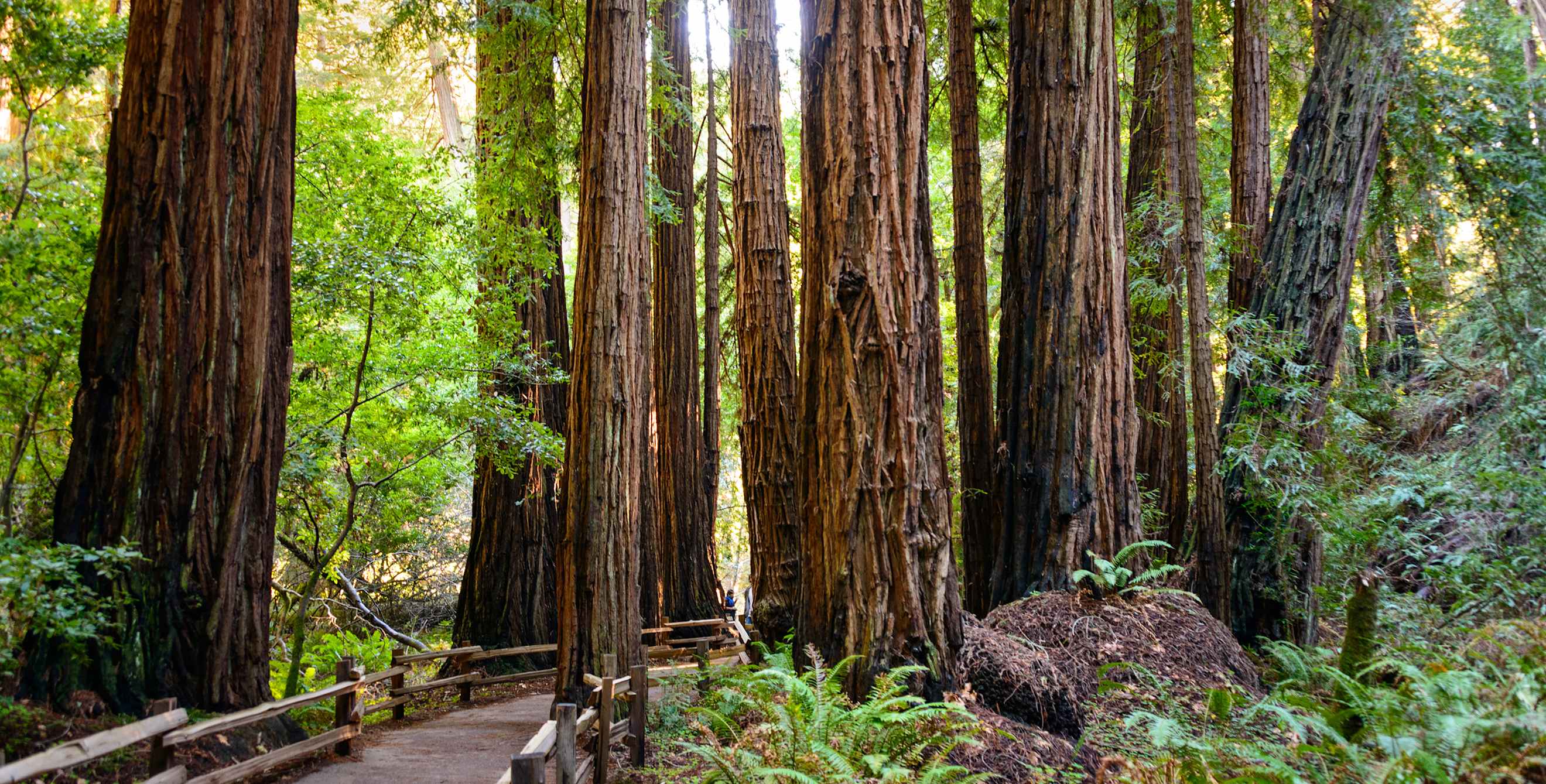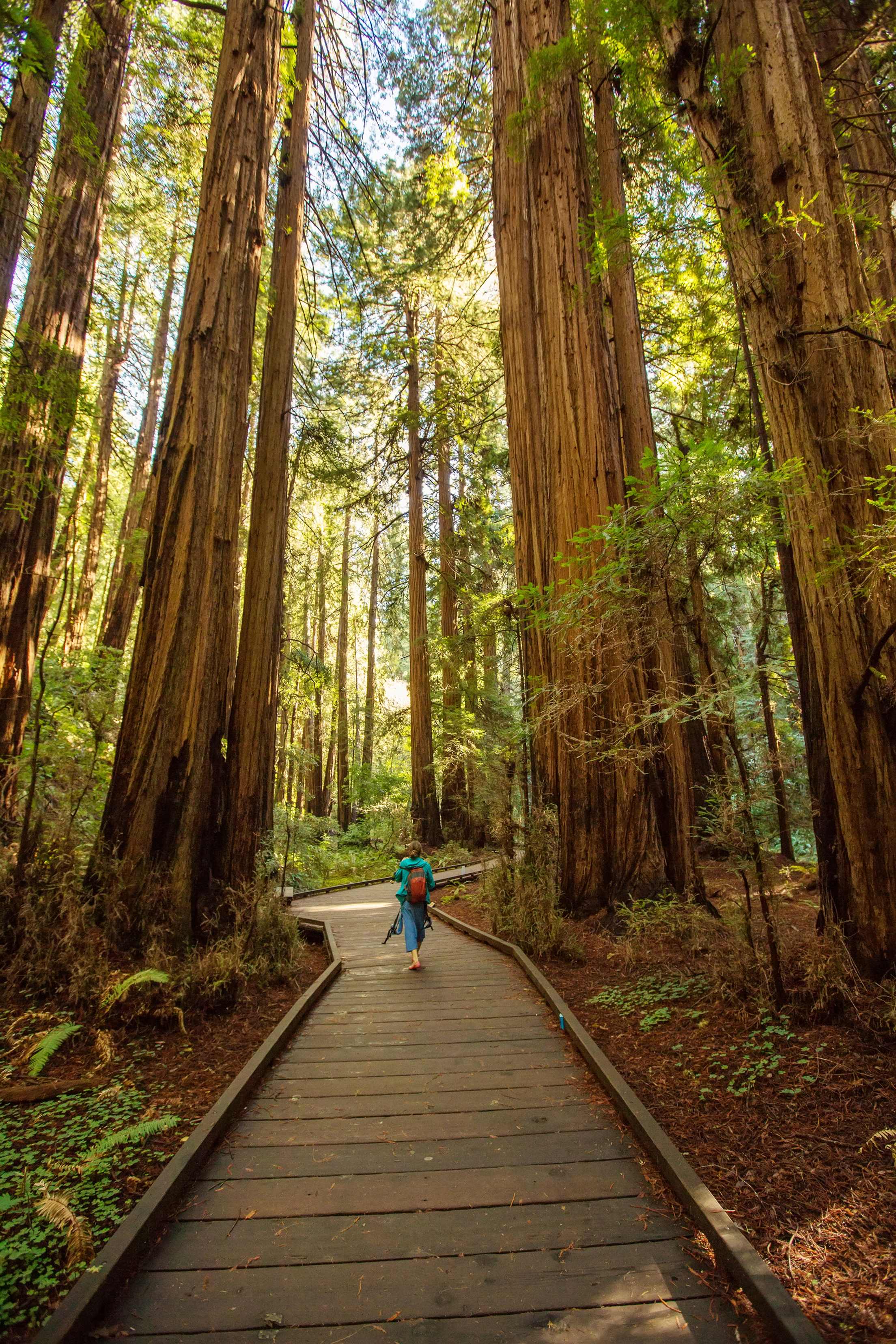
What to See and Do in Muir Woods National Monument
North of San Francisco, you'll find 559 acres of redwood trees as old as 1,200 years.

John Muir was awestruck by the redwood canyon that now bears his name. “This is the best tree-lover’s monument that could possibly be found in all the forests of the world,” gushed the seasoned explorer in a letter to William Kent, the Western philanthropist who in 1908 secured 295 acres for a national preserve a dozen miles north of San Francisco.
That’s quite an endorsement from the man who had climbed North America’s most remote peaks and had already lent his name to a vast Alaskan glacier. But Muir worried that the United States was quickly despoiling its wild places. He and Kent believed preserving a pocket of old-growth forest near the Golden Gate would create a conservation touchstone for generations of travelers.
Their hunch proved right. The coast redwoods of Muir Woods National Monument, which now embraces 559 acres, aren’t the oldest or the tallest, but they are hugely popular. Over 1 million people a year make the pilgrimage to gaze on the giants—250 feet tall and up to 1,200 years old—amid their rare fog-kissed ecosystem. Virgin redwoods once covered 2 million acres, from southernmost coastal Oregon to the heart of Big Sur; this grove is part of the 4 percent of old-growth forest that remains, largely in Northern California state and national parks.

A boardwalk trail through the park reduces the impact of visitors.
To see what Muir saw, start in the valley, where redwood sorrel grows like a carpet of oversize shamrocks so adapted to partial shade that they collapse their leafy parasols in bright sunlight. Along a flat, two-mile loop trail that starts at the visitor center and crosses Redwood Creek in several spots, alligator lizards skitter and slimy banana slugs ooze between sword ferns and spiky horsetails. Listen for the thrum of diving hummingbirds or the tsee-tsee of a perfectly camouflaged brown creeper hopping up a tree. Steelhead and coho salmon are making a comeback in the creek, thanks to recent restoration work. Look for spawning salmon after rains in December or early January.
For more of a workout and a squirrel’s-eye view of the forest, take the pretty Hillside Trail. Or try Fern Creek Trail beyond quiet Cathedral Grove. Adults as well as children will enjoy thumping across the fallen logs. Tell the kids that redwoods are death-defying superheroes—when one is cut down, clones shoot up from burls on its stump. Throughout the woods, these circles of redwoods, some hollowed by fire but still standing, serve as testament to persistence in the face of threats. Muir would be proud.